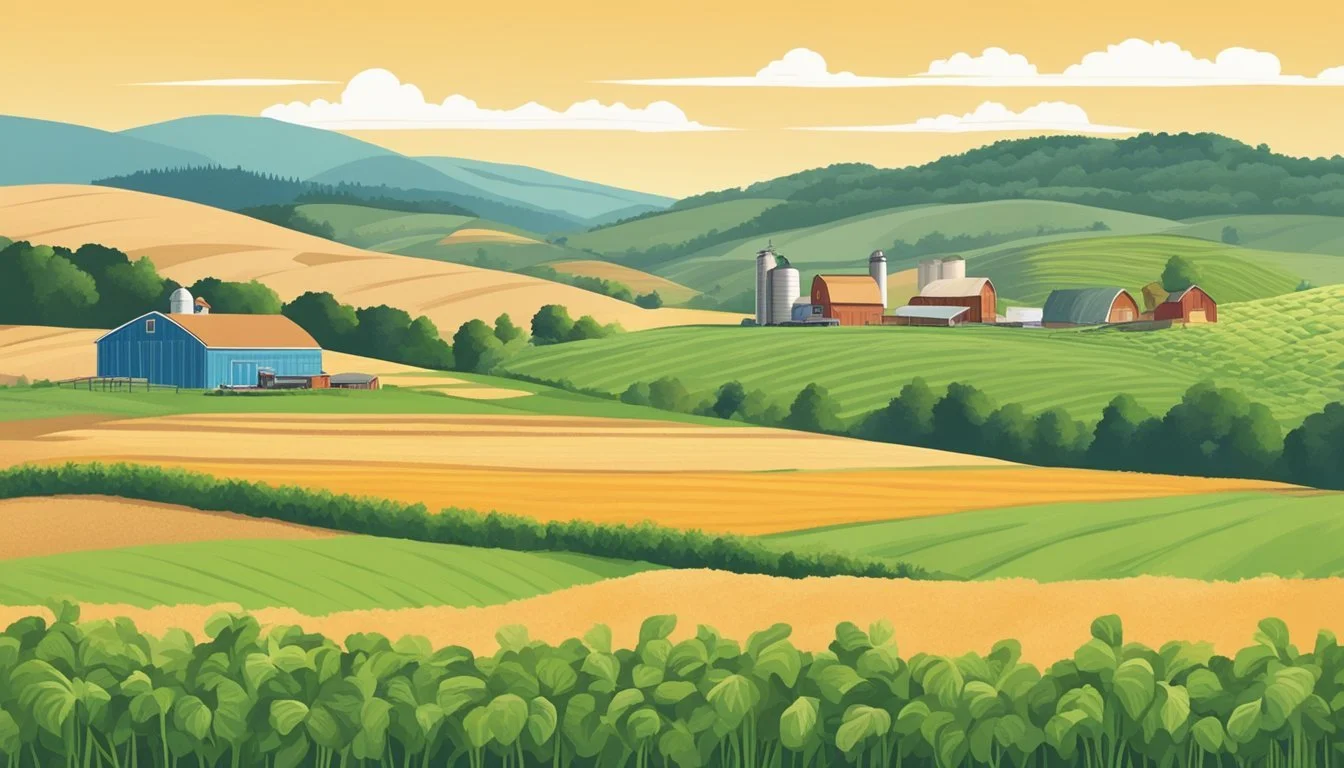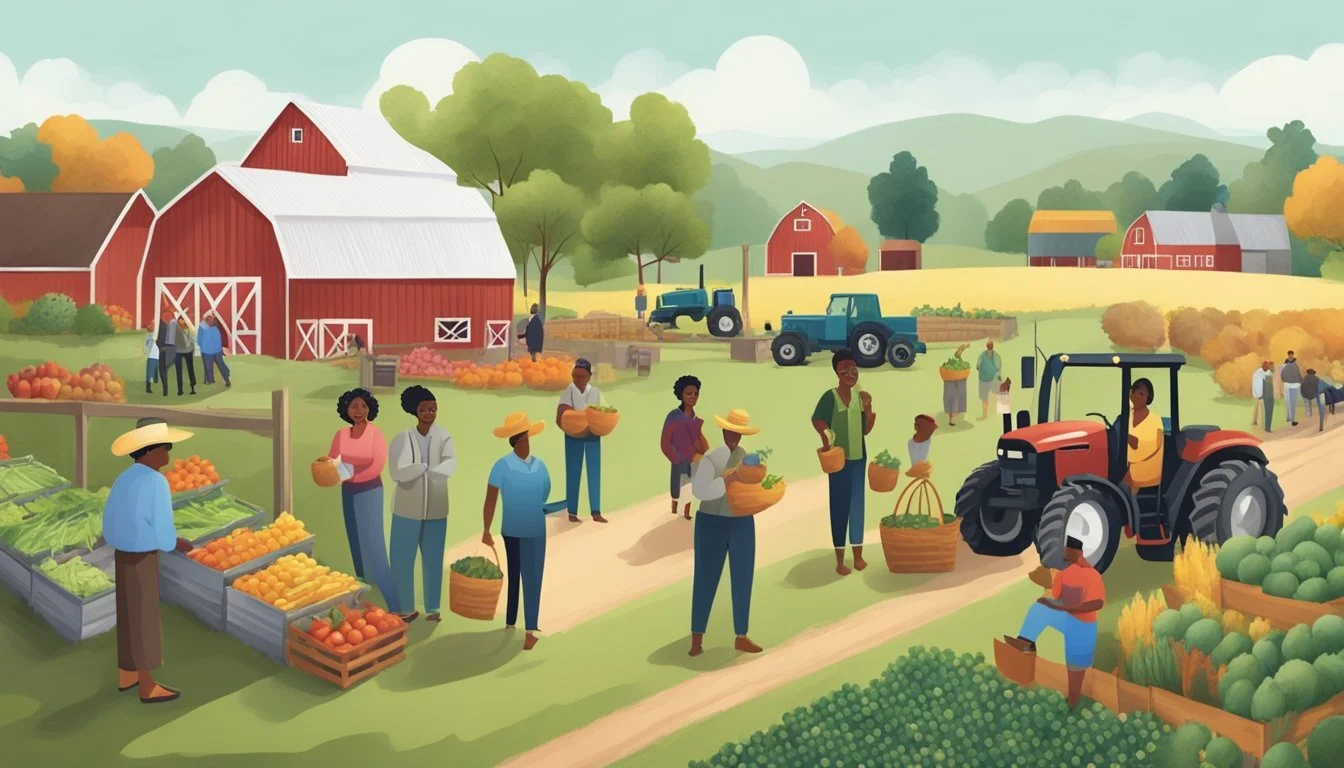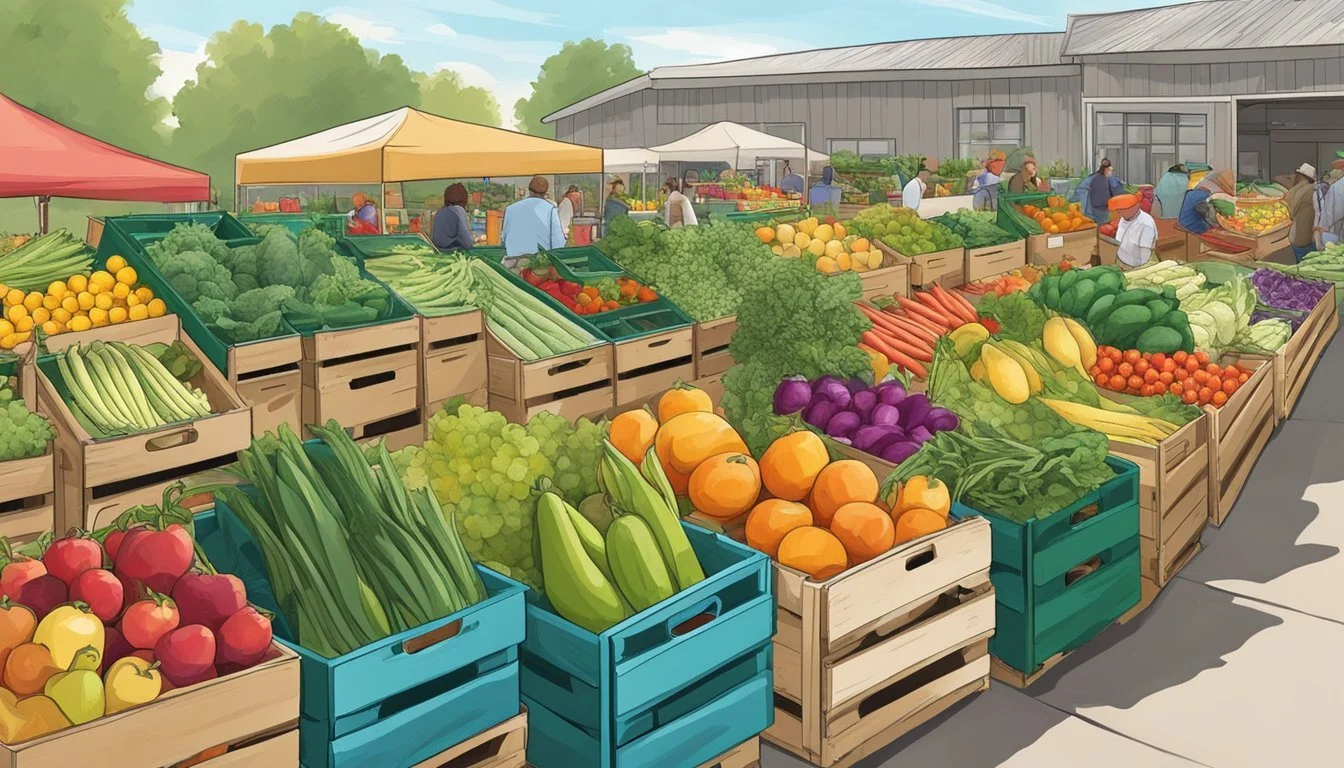Community Supported Agriculture (CSA) in South Dakota
Benefits and How to Participate
Community Supported Agriculture, commonly known as CSA, represents a model of food production and distribution that directly connects producers and consumers within a region. In South Dakota, this system has taken root in various forms, allowing local farmers to provide a weekly supply of fresh farm products to participants who purchase shares at the beginning of the growing season. This economic arrangement grants consumers access to high-quality, locally-grown produce and simultaneously gives farmers a stable, upfront source of income.
South Dakota's embrace of CSA reflects a broader national trend that values sustainable farming practices and supports local economies. The concept, introduced in the United States in 1985, has flourished across the country and in the state, with many South Dakota farms adopting the model. These farms offer a diverse range of produce, fostering a direct-to-consumer relationship that promotes transparency and trust.
The CSA model in South Dakota not only supports the agricultural community but also contributes to the health and well-being of its residents. By participating in CSA programs, South Dakotans are able to enjoy fresh, nutrient-rich foods while supporting local farmers' efforts to grow and market their crops efficiently. This synergy has cultivated a unique agricultural landscape where the ties between farmer and consumer are strengthened, and the local food system is enhanced.
Understanding CSA
Community Supported Agriculture (CSA) is a rapidly growing movement in South Dakota that connects consumers directly with local farmers. This model promotes sustainable agricultural practices and fosters community relationships.
The CSA Model
In South Dakota, the CSA model involves consumers purchasing shares from local farms at the beginning of the growing season. Payment upfront provides the farmer with a stable income, and in return, shareholders receive a weekly distribution of fresh farm products throughout the season. This system establishes a mutually beneficial relationship between the consumer and the farmer.
Benefits for Consumers and Farmers
Consumers benefit from the CSA model through access to fresh, local produce, often with more variety than what is found at traditional retailers. They become part of a community that supports local food systems and sustainable agricultural methods. Farmers, on the other hand, gain a reliable source of income and the ability to plan their crop production more efficiently, knowing they have a dedicated customer base.
CSA Variations
CSA programs in South Dakota may vary. Some offer the standard weekly allotment of produce, while others may include options for eggs, meat, dairy, or artisanal products. Further variations allow consumers some choice in what they receive, or operate on a more flexible schedule. The extent of personal interaction with the farmer can also differ, from picking up shares at a designated location to participating in farm events or volunteer opportunities.
CSA Farms in South Dakota
In South Dakota, Community Supported Agriculture represents a direct partnership between local farmers and consumers, facilitating access to fresh, seasonal produce and other farm products. Consumers subscribe to shares and in return receive regular deliveries of farm goods, embodying a farm-to-table ethos.
Key Locations
Community Supported Agriculture is active across South Dakota, with Sioux Falls often serving as a hub due to its larger population and demand. CSA farms are scattered throughout the state, ensuring that members have access to fresh, local food. Many of these farms connect with consumers at farmers markets, online platforms, or through direct sign-ups at the farms themselves.
Typical Offerings
CSA farms in South Dakota typically offer a diverse range of products. Vegetables and fruits are staples, often making up the core of a CSA share. Alongside this, many farms provide options to include meats, cheese, and eggs. The offerings are seasonal, meaning they vary throughout the year based on what is being harvested.
Subscription and Shares
Consumers can subscribe to CSA shares on a usually weekly or monthly basis. These subscriptions come in various sizes, with options such as a full share or a half share, accommodating different household sizes and consumption rates. Delivery options vary, with some farms offering pickup points while others deliver directly to homes.
The structure of CSAs in South Dakota centers around understanding and accommodating the needs of both the consumer and the farmer, building a sustainable food system that supports local agriculture.
Local and Seasonal Produce
Community Supported Agriculture in South Dakota emphasizes the value of local and seasonal produce. Consumers have direct access to freshly harvested fruits and vegetables throughout the growing season.
Seasonality and Harvest Times
South Dakota's varied climate dictates the harvest times for seasonal produce. The local CSA programs offer shares of produce that align with these natural cycles, ensuring that members receive the freshest possible bounty. For instance, tomatoes and peppers are typically ready to harvest from late July through September, while carrots and onions are harvested from August to October.
Spring: Early greens, radishes
Summer: Tomatoes, peppers, onions, carrots
Fall: Winter squash, root vegetables
Understanding and adhering to these times ensures the integrity and sustainability of the food systems.
Freshness and Quality
The close proximity of farms participating in CSA programs to their consumers in South Dakota guarantees fresh produce. With shortened time from harvest to table, the produce retains more nutrients and flavors. For instance, CSA shares often include vegetables like tomatoes and peppers at their peak ripeness, providing unmatched taste compared to their off-season or shipped counterparts.
Freshness: Picked at peak ripeness, minimal transportation
Quality: Focus on sustainable farming, rich flavors, and high nutritional value
Such attention to timely harvesting and distribution underscores the commitment to sustainable food systems and the delivery of high-quality, nutritious produce to CSA members.
Consumer Experience with CSA
Customers who participate in Community Supported Agriculture (CSA) in South Dakota benefit from a direct connection with local farms, receiving seasonal, weekly deliveries of fresh produce. They gain exposure to a variety of locally grown food products and engage with their community through supporting local agriculture.
Joining a CSA Program
Consumers typically sign up for a CSA program before the farming season begins. They purchase shares of the anticipated harvest, providing early season capital for farmers. This upfront commitment allows both parties to enter into a mutually beneficial relationship.
Receiving Deliveries
CSA participants usually receive their shares on a weekly basis. Deliveries are often distributed at centralized community locations or even directly to customers' doorsteps. The contents of these deliveries are seasonal and can vary from week to week, depending on what the farm is harvesting.
Cooking and Usage Tips
Exploring Variety: Consumers learn to utilize a range of produce, including new and unfamiliar fruits and vegetables. This provides an opportunity to expand their culinary repertoire.
Cooking Seasonally: Members often receive tips and recipes with their CSA share to help them make the most of seasonal produce, encouraging creative and healthful cooking practices.
Economic and Social Impacts
Community Supported Agriculture (CSA) in South Dakota has demonstrated noteworthy economic and social effects, impacting local economies and nurturing the bond between community members.
Supporting Local Economy
CSAs contribute significantly to South Dakota's local economies by ensuring that more of the consumers' dollars stay within the area. By purchasing directly from CSAs, consumers support local farmers and producers, thereby circulating money within the community rather than sending it to distant corporations. For instance, a grant awarded by the South Dakota Community Foundation provided funds to South Dakota State University - Extension to enhance access to locally grown, organic produce.
Local Farmers' Market Participation:
Increased vendor sales: Direct engagement with consumers at farmers markets encourages spending on local goods, stimulating economic growth.
Job creation: Small-scale producers and affiliated businesses may see a rise in employment opportunities as the CSA model thrives.
Fostering Community Relationships
CSAs in South Dakota foster profound relationships between farmers and consumers. The model of CSA necessitates a commitment from consumers to support their local producers, often creating a partnership rather than a mere transactional relationship.
Workplace Integration:
CSA workplace delivery programs can foster a culture of wellness and community engagement, strengthening relationships among employees through shared support of local agriculture.
Community Engagement:
Educational Opportunities: CSA members frequently have the chance to learn more about farming and sustainability, building a knowledgeable community invested in local agriculture.
Social Events: Many CSA programs host social events, such as potlucks or farm visits, where members can connect, boosting community cohesion and shared values around food and health.
CSA and Agricultural Policy
Community Supported Agriculture (CSA) in South Dakota is influenced by federal agricultural policy and programs that support sustainable food systems. CSA benefits from the facilitation and promotion efforts by key USDA agencies.
USDA Support for CSAs
The United States Department of Agriculture (USDA) recognizes CSAs as an integral part of sustainable food systems, offering financial and technical support to such initiatives. Through its various programs, USDA facilitates direct-to-consumer sales platforms which are essential for the success of CSAs. Supporting local food systems, USDA has collected data indicating that thousands of farms utilize CSA to direct their fresh produce to consumers, enhancing the farm-to-table movement for healthier communities.
Financial Programs: Funding opportunities like grants and loans are available for CSA farmers to enhance their operations, improve distribution, and increase sales.
Technical Assistance: Practical guidance is provided by USDA to help new and existing CSAs navigate the agricultural landscape, ensuring that both farmers and consumers benefit.
Agricultural Marketing Service (AMS) Role
The Agricultural Marketing Service (AMS), which is a branch of the USDA, plays a specific role by operating directories and platforms that integrate local CSA programs, like those in South Dakota, facilitating their marketing and accessibility.
Directory Management: AMS operates a comprehensive CSA directory that connects consumers in South Dakota with local CSA programs, bolstering the visibility of these producers.
Food Hubs and Farmers Markets: AMS supports food hubs and farmers markets, which are pivotal in enhancing market access for CSA participants and serving as focal points for local agricultural commerce.
Through these subsections of AMS, CSAs receive the necessary tools and platforms that not only help in marketing of the U.S. agricultural products but also contribute to a stronger and more resilient local food system.
Conclusion
The concept of Community Supported Agriculture (CSA) has established a symbiotic relationship between local farmers and consumers, fostering a sustainable and community-centric food system in South Dakota.
The Future of CSA in South Dakota
Sustainability takes forefront in South Dakota's CSA outlook. Farmers and consumers collectively support eco-friendly practices, ensuring that the land gives back just as much as it yields. This method bolsters community resilience and stands as a testament to the state's commitment to cultivating seasonal and local produce. As demand for CSA shares grows, it will further entrench the ideals of sustainable agriculture into the fabric of South Dakota's food systems.
Farmers in South Dakota have become increasingly attuned to the benefits of CSA models, reaping the advantages of secured income and close-knit community relationships. For the consumer, this translates to engagement with the rhythm of the seasons, enjoying fresh, seasonal produce while contributing to a locally sustained economy.
Getting Involved
For individuals interested in becoming an integral part of the CSA movement in South Dakota, several paths are available:
Purchase Shares: Support local farmers by purchasing a CSA share, which provides seasonal fresh produce throughout the farming season.
Volunteer: Participate in the local CSA community through volunteering, an excellent way to understand the behind-the-scenes of sustainable farming.
By integrating with a CSA, consumers play an active role in fostering a sustainable, community-driven food supply, and help secure a firm foundation for these practices for years to come.








